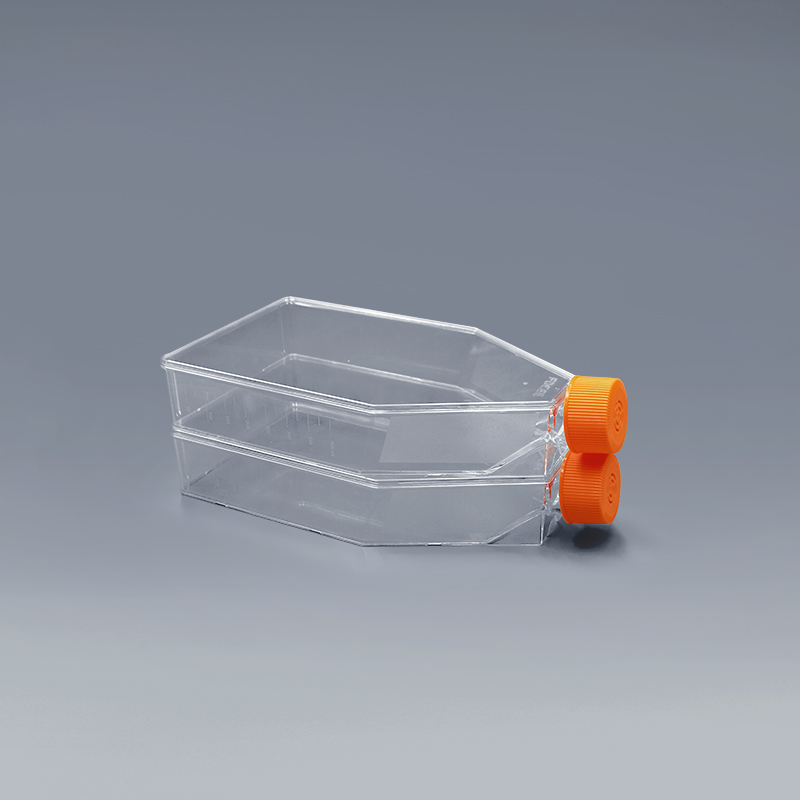細胞培養フラスコ小規模な細胞培養で一般的に使用される消耗品です。細胞増殖条件の観察を容易にするために、より透明性の高いポリスチレン材料が一般的にこの消耗品に選択されます。それで、この材料の特徴は何ですか?
ポリスチレンは、ラジカル付加重合によってスチレンモノマーから合成されたポリマーを指します。無色透明の熱可塑性プラスチックで、次の特徴があります:
1。機械的特性
ポリスチレン分子とそれらの凝集構造は、それらが剛性で脆い材料であり、応力下で脆性破壊を示すことを決定します。
2。熱性能
脆化温度は約-30°C、ガラス転移温度は80-105°C、溶融温度は140-180°C、分解温度は300°Cを超えています。熱伝導率は0.04〜0.15W /(m・K)と低く、温度変化が少ないため保温性に優れています。
3。電気的性能
ポリスチレンは優れた電気的特性を持ち、体積抵抗率と表面抵抗率はそれぞれ1016〜1018Ω・cmと1015〜1018Ωと高くなっています。誘電損失の接線値は非常に低く、周波数、環境温度、湿度の変化の影響を受けません。優れた断熱材です。
4。光学性能
ポリスチレンは、光透過率が88%〜92%、屈折率が1.59〜1.60と優れた光学特性を持っています。それはすべての波長の可視光を送信することができます。透明な素材は、プラスチックのプレキシガラスなどのアクリルポリマーに次ぐものです。 。
5。化学的性質
ポリスチレンは、さまざまなアルカリ、塩、水溶液に耐性があります。低級アルコールおよび特定の酸(硫酸、リン酸、ホウ酸、質量分率10%〜30%の塩酸、および質量分率1%〜25%の酢酸など)に耐性があります。、Formic質量分率が1%から90%の酸も安定しています。
上記のポリスチレンの特性は細胞培養フラスコのニーズを満たすことができます。また、付着細胞培養に使用する場合は、細胞の付着性能を高めるためにボトルの表面を特別に改変する必要があります。
The FAI climbed 5.9 percent year-on-year in the first 11 months of 2018, quickening from the 5.7-percent growth in Jan-Oct, the National Bureau of Statistics (NBS) said Friday in an online statement.
The key indicator of investment, dubbed a major growth driver, hit the bottom in August and has since started to rebound steadily.
In the face of emerging economic challenges home and abroad, China has stepped up efforts to stabilize investment, in particular rolling out measures to motivate private investors and channel funds into infrastructure.
Friday's data showed private investment, accounting for more than 60 percent of the total FAI, expanded by a brisk 8.7 percent.
NBS spokesperson Mao Shengyong said funds into weak economic links registered rapid increases as investment in environmental protection and agriculture jumped 42 percent and 12.5 percent respectively, much faster than the average.
In breakdown, investment in high-tech and equipment manufacturing remained vigorous with 16.1-percent and 11.6-percent increases respectively in the first 11 months. Infrastructure investment gained 3.7 percent, staying flat. Investment in property development rose 9.7 percent, also unchanged.
 English
English



















































